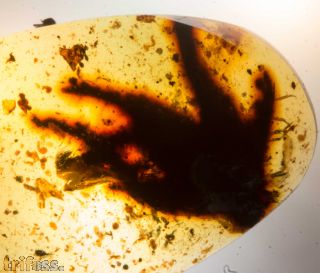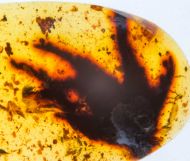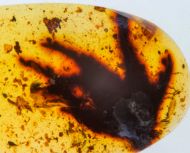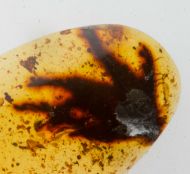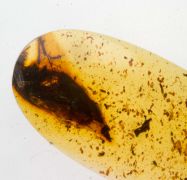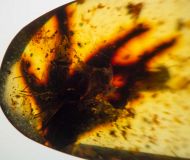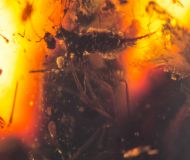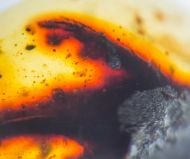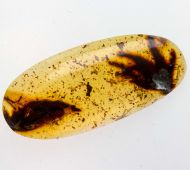Fossils for sale
Welcome back!
Sold:
Reptilia non det. ?Retinosaurus hkamtiensis Cernanský et al., 2022
Products description
| Fossil reptiles are naturally one of the rarities in the cretaceos amber from Myanmar. This Burmese amber features a fossil leg of a lizard together with an some insect remains. Lizards are relatively common in Burmese amber, compared to other Amber deposits. How ever it is remarkable that lizard leg often are entombed along with the remains of insects in the Burma Amber. This suggests that these gecko like lizards were feasting the insects caught on the surface of the sticky araucaria resin. And may were occasionally also trapped in the resin. Perhaps these small lizards also lived on the araucaria trees. After all, the leaf scales of the these araucaria may have provided some good shelter in the Cretaceous jungle fur such small reptiles. This lizard fossil in amber is a foot which is likely belongs to the species Retinosaurus hkamtiensis. The species Retinosaurus hkamtiensis was just recently described from Cretaceous Burma amber of Myanmar in this year (2022). The present lizard inclusion clearly shows a mostly complete foot of Retinosaurus. The bone substance can be observed in the polished section. Lizards in amber are often shrouded in a misty veil . Just like this example. This piece is a nice and inexpensive specimen of a Cretaceous reptile fossil in amber from Myanmar. The fossil lizard leg is about 8 mm long. | |||
Location: | Hukawng Valley, Myanmar (Burma) | ||
| Size of Amber: | about 21 x 9 mm | ||
| Age: | Middle Cretaceous, Burmite Upper Albian to Lower Cenomanian (about 100 Ma) | ||
Product no.: 10976
